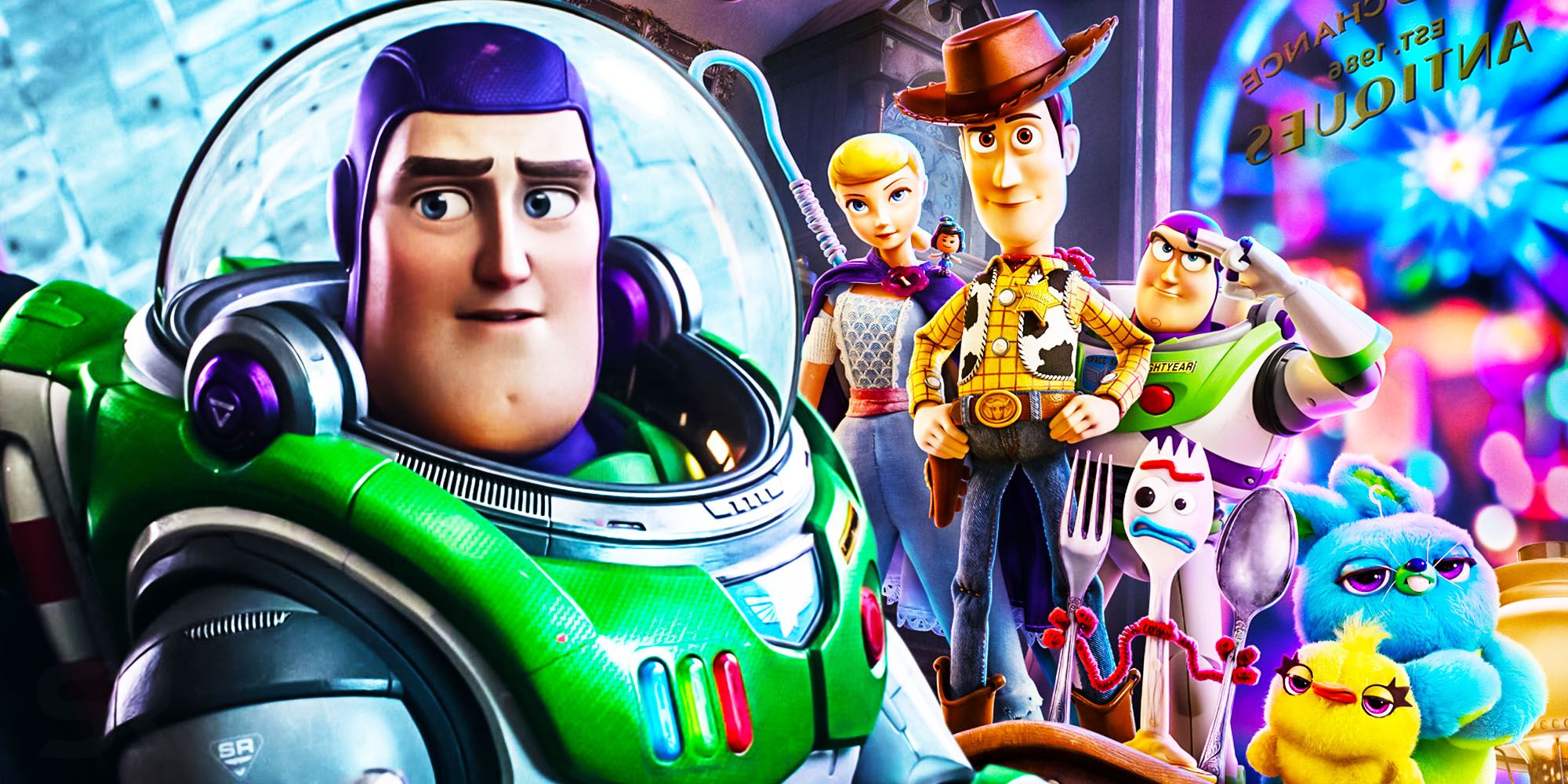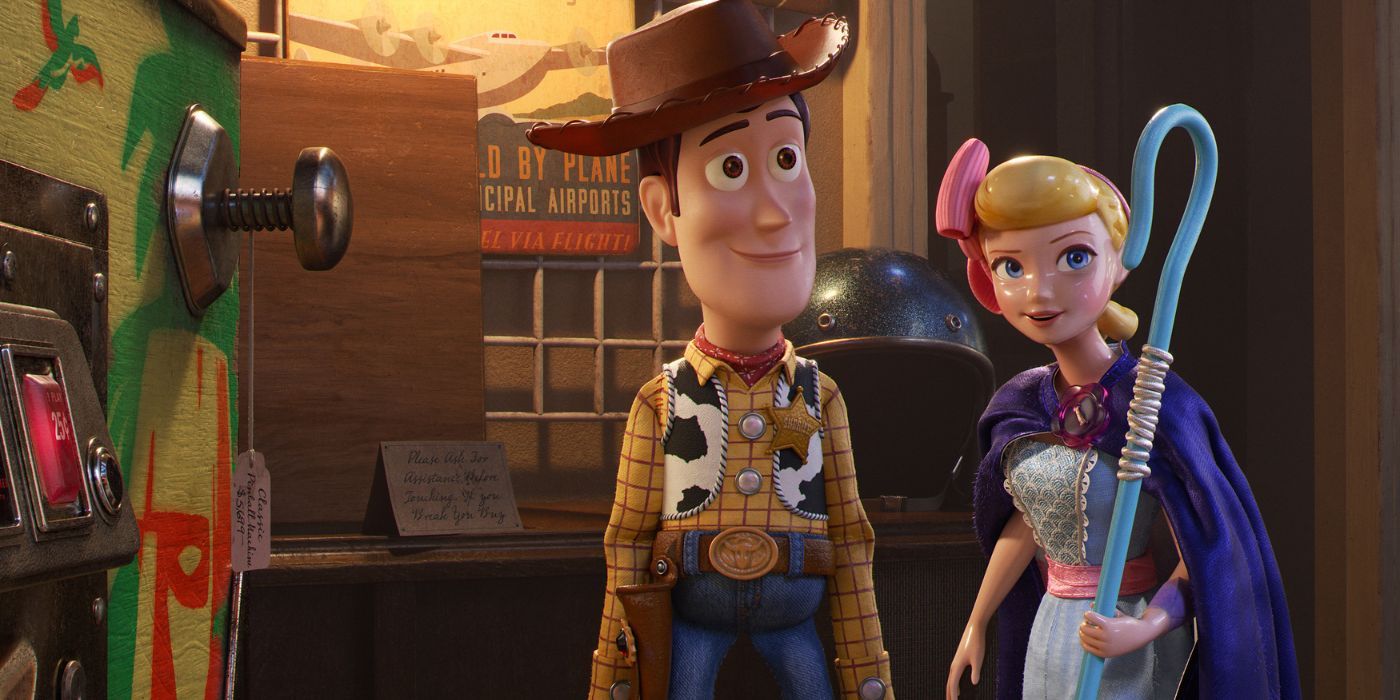Lightyear created a frustrating realization about Andy's toys from the original 1995 Toy Story. Text at the beginning of the film explains that Lightyear is Andy's favorite movie from 1995 and the reason that he gets a Buzz Lightyear toy on his birthday that year. In addition to the Buzz action figure, Andy also gets (either on his birthday or throughout the following weeks) other Lightyear merchandise. A montage in Toy Story shows all of his cowboy and Woody-related merchandise being replaced with Buzz Lightyear posters, bedding, pajamas, and drawings.
In Toy Story 2, Buzz is temporarily replaced with a different Buzz figure from an aisle of hundreds of identical figures at Al's Toy Barn. A Zurg figure is also released from Al's and the film has a running gag about Rex trying to beat a Buzz Lightyear video game. Toy Story and Toy Story 2 make it clear that, in fiction, Lightyear was a popular enough film in the '90s for a huge merchandising push.
The release of Pixar's Lightyear movie in 2022, however, reveals a gap in the merchandise seen in the Toy Story films. Buzz and Zurg are the only Lightyear characters featured on merchandise in the Toy Story films, while the other main characters are missing entirely. This could be seen as just an oversight on the part of the filmmakers, but it also reveals an unfortunate truth about toys in the '90s: there was little diversity and realistic representation.
Why Toy Story Lacked Diversity With Its Toys
The main cast of Lightyear is relatively diverse. Alisha Hawthorne (Uzo Aduba) is a Black woman who marries another woman. Their granddaughter, Izzy Hawthorne (Keke Palmer), is also Black. Mo Morrison (Taika Waititi) is a man of color and Darby Steel (Dale Soules) is an elderly woman. Lightyear's LGBTQ+ characters, characters of color, and elderly character are omitted from the 1990s merchandise seen in Toy Story and Toy Story 2, however. It's not unfathomable for a movie with such a diverse cast of characters to have existed in 1995, but it's, unfortunately, true that toys of these characters probably wouldn't have existed because they wouldn't have been seen as marketable.
As if real merchandise from the 1990s doesn't prove this, the fact that all of Andy's other humanoid toys are white does. Most of the toys in the Toy Story films are based on real-life toys, and there are very few non-white toys seen, even as more human characters of color show up in the franchise. The lack of diverse Lightyear toys is also clear when compared to another potential Toy Story spinoff, Woody's Roundup. As seen in Toy Story 2, there were toys released in the 1950s of all the main Woody's Roundup characters. But Woody, Jessie, and Stinky Pete are all white. Stinky Pete is an older character, like Darby Steel, but Pete even complains that no kid ever wanted a toy like him.
However, there is one other main Lightyear character that would have definitely existed as a toy in the 1990s: Sox. Buzz's robot cat companion is the most obvious merchandising opportunity both today and in the 1990s. His absence from the Toy Story films isn't as easily explained away as the absence of the Hawthornes, Mo, and Darby. Maybe Andy doesn't like cats, so didn't want his own Lightyear robot cat Sox. But that leaves only one explanation for why Sox isn't in the Buzz Lightyear aisle of Al's Toy Barn: he is such a popular Lightyear toy that he had already sold out.


